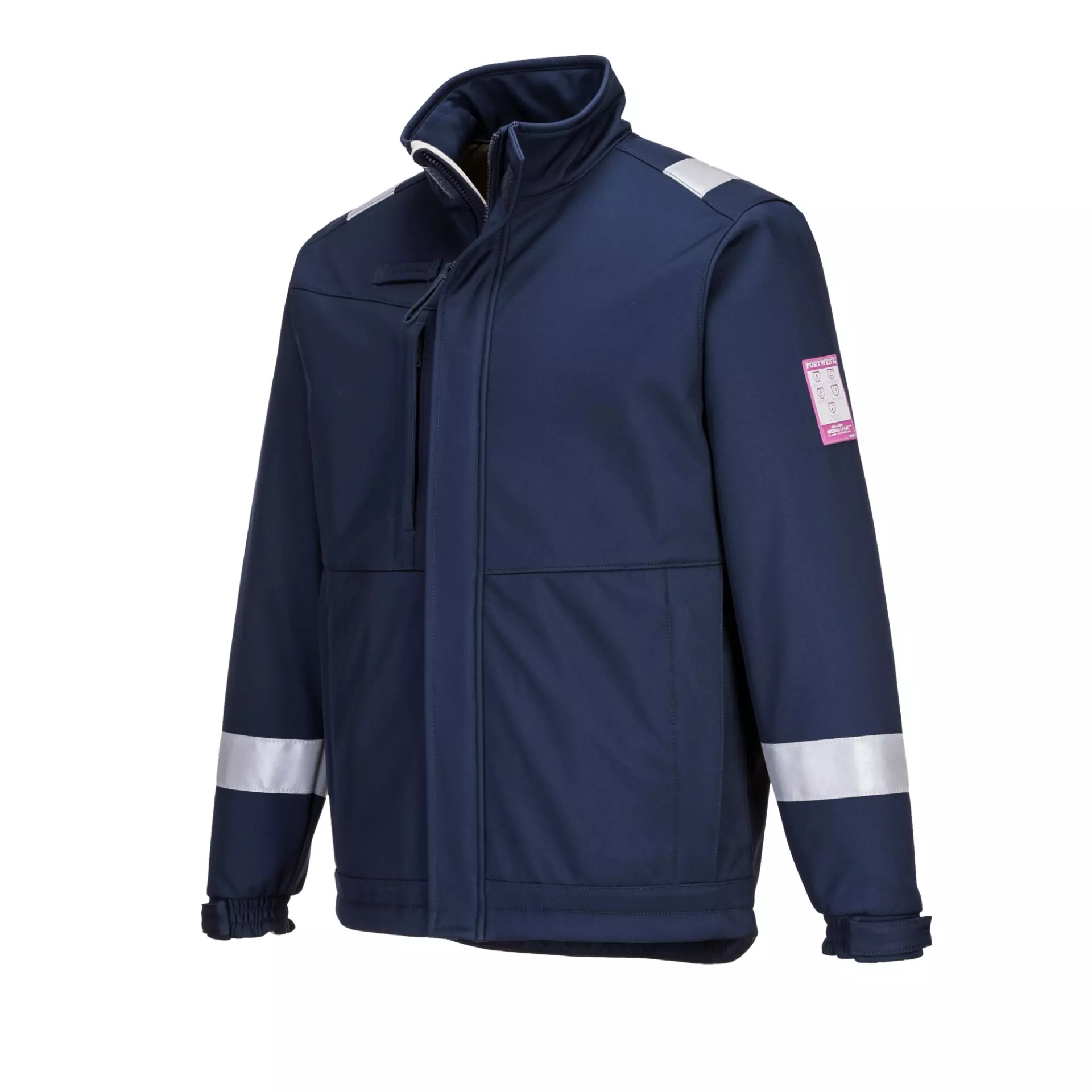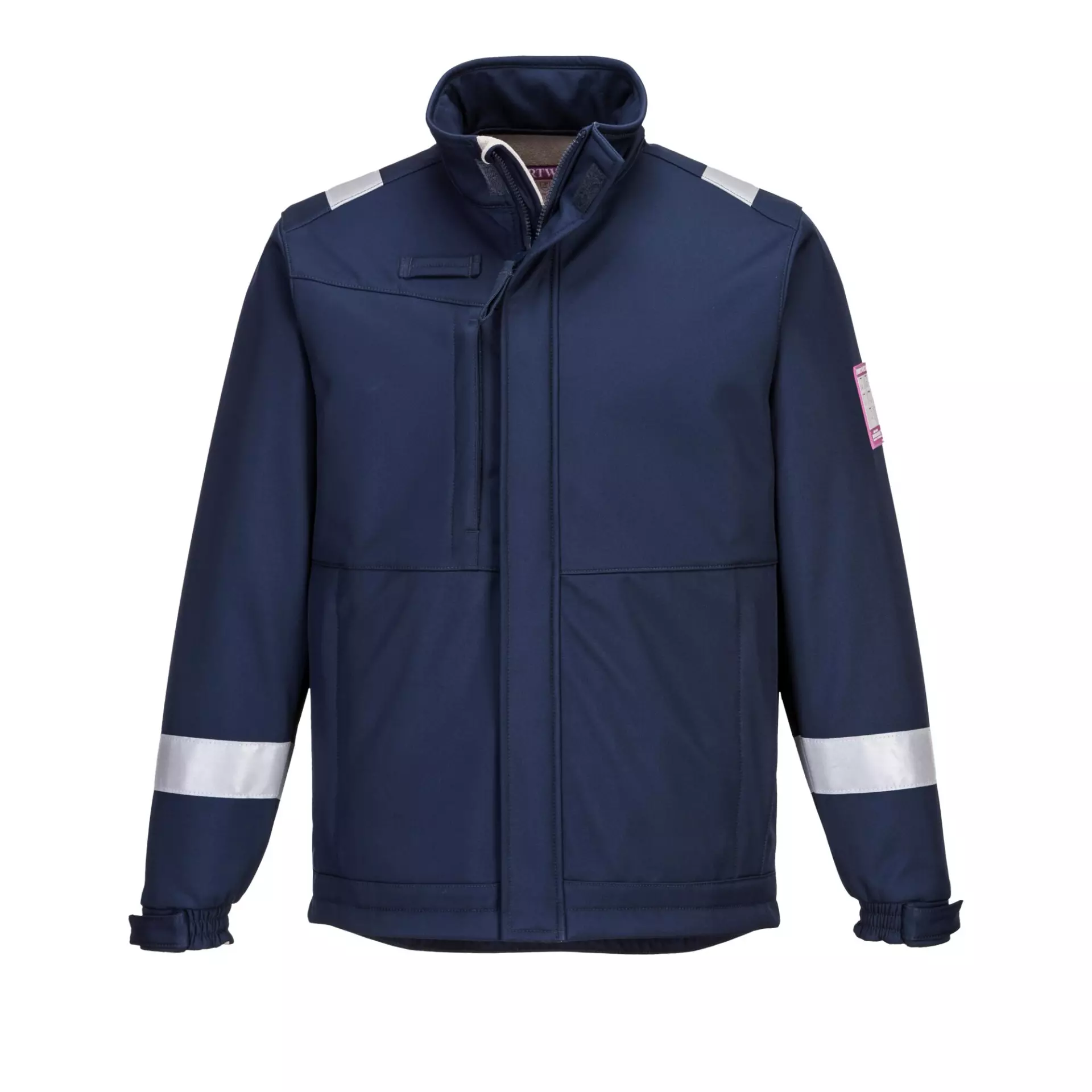
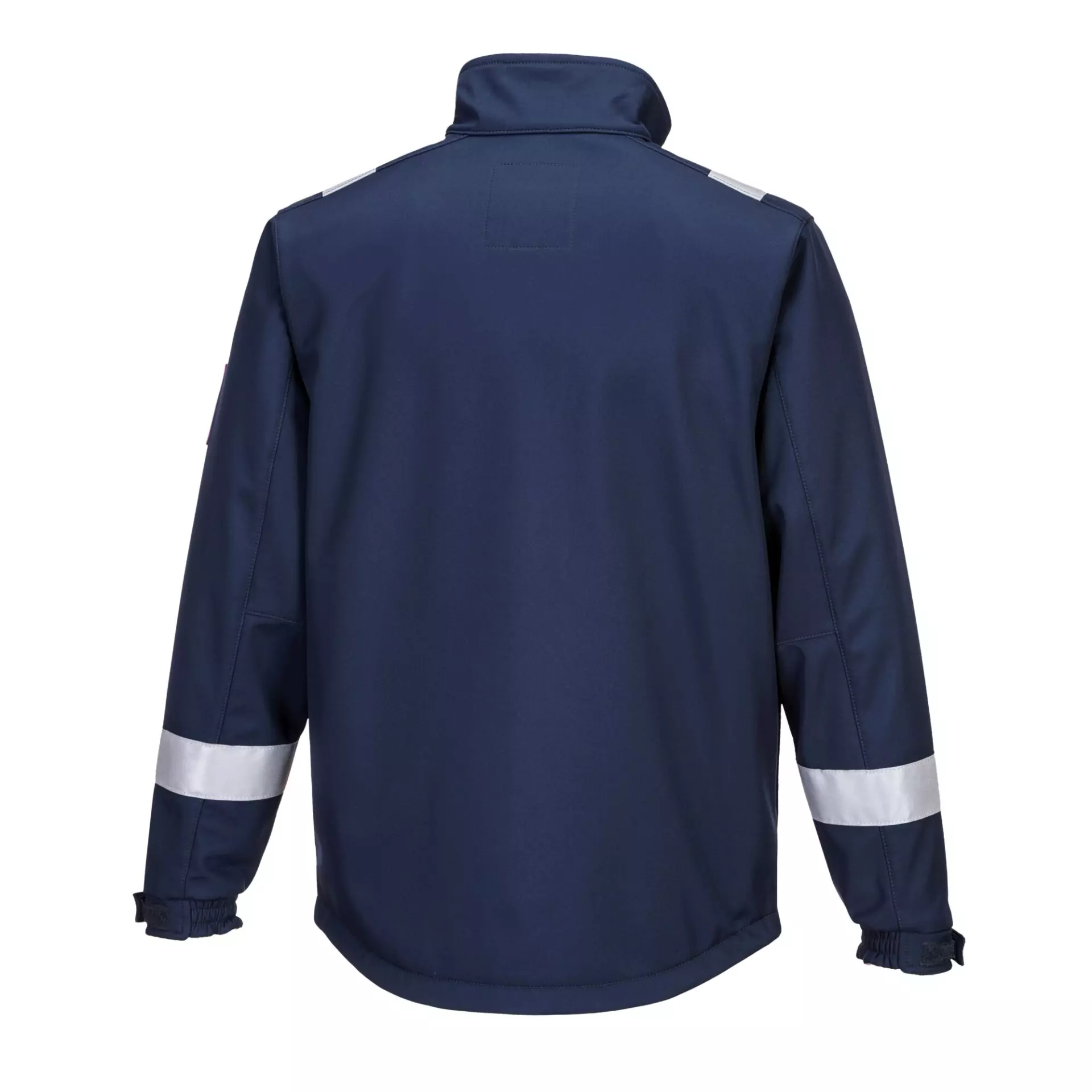
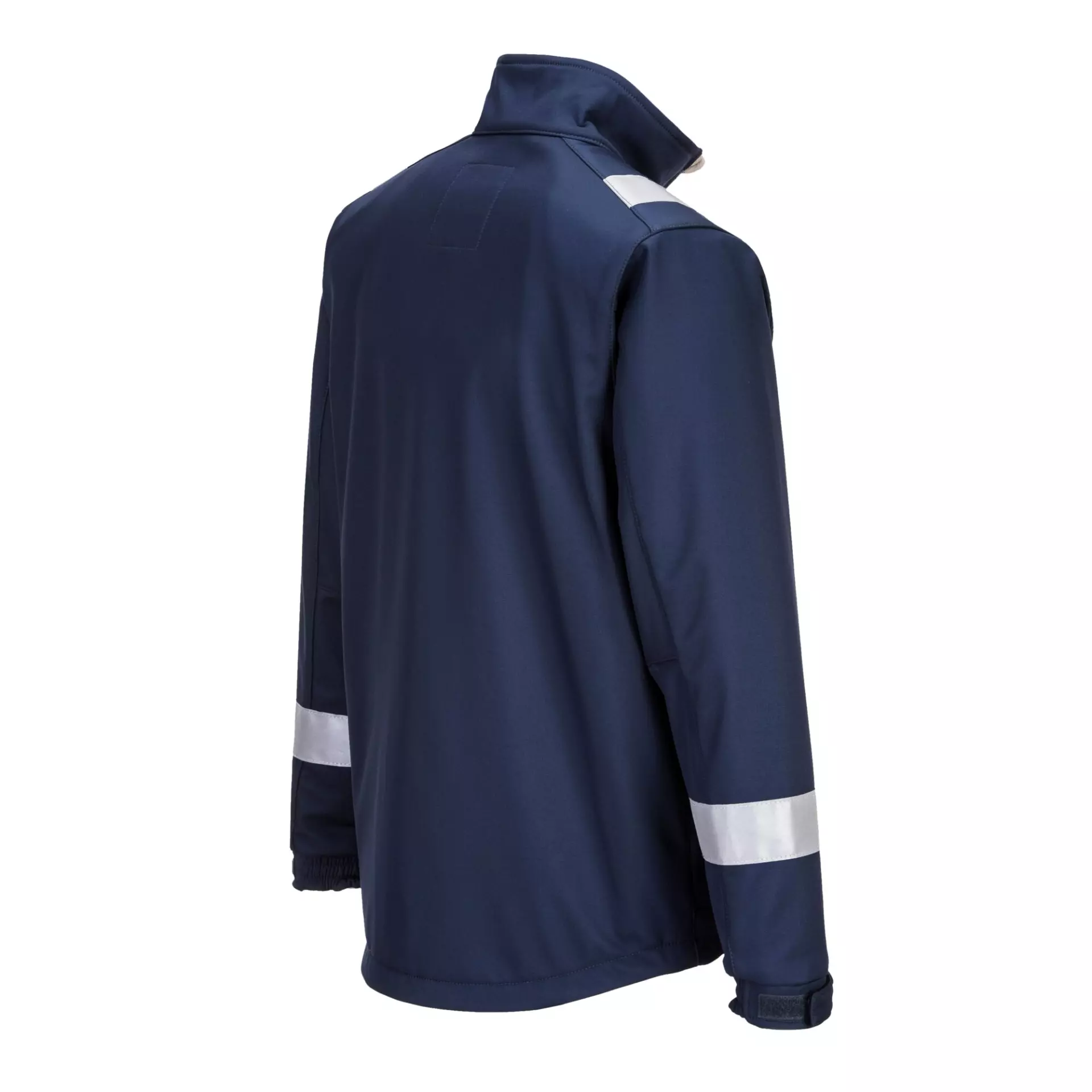
Features You'll Love
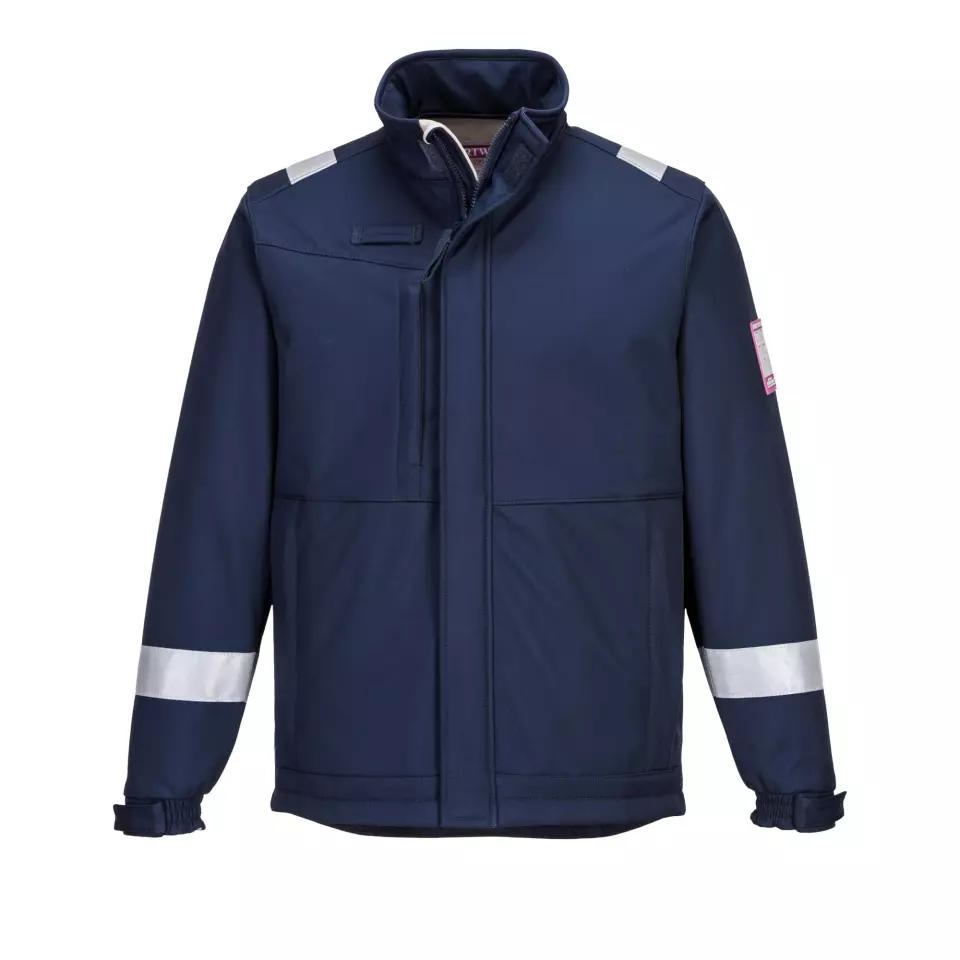
Material · Softshell, Carbon Fibre, Cotton, Polyester, Fabric

Closure Style · Zipper
The method used to fasten the jacket or vest, affecting ease of use, security, and weather protection during work activities.
Portwest
Modaflame Softshell Jacket, Navy
Modaflame Softshell Jacket, Navy
4.8 / 5
155,49 €
Choose size
Free delivery
Features You'll Love

Material · Softshell, Carbon Fibre, Cotton, Polyester, Fabric

Closure Style · Zipper
The method used to fasten the jacket or vest, affecting ease of use, security, and weather protection during work activities.
Product description
The Modaflame Multi Norm Arc Softshell Jacket is constructed from a highly protective 3-layer softshell fabric using modacrylic and carbon fiber elements. This advanced jacket provides comprehensive flame, chemical, and anti-static protection while maintaining breathability and comfort. The interactive zipper system allows integration with outer jackets for enhanced insulation, and the inherent flame-resistant qualities will not diminish with washing.
Product Features:
- 3-layer softshell construction with modacrylic and carbon fiber elements
- Interactive zip for compatibility with outer jackets
- Premium sew-on flame resistant reflective tape
- Storm flap front protection against elements
- Hook and loop cuffs for secure fit
Technical Details:
- Inherent flame resistant qualities that do not diminish with washing
- 40+ UPF rated fabric blocks 98% of UV rays
- Durable, breathable, windproof and water resistant fabric
- Anti-static properties
- Wind resistant protection against wind chill
Recommended Applications:
- Suitable for ATEX environments
- Protects against radiant and convective heat
Standards:
- CE-CAT III certified
- EN ISO 11612 (A1 B1 C2)
- EN ISO 11611 Class 2 (A1)
- EN 1149-5
- IEC 61482-2 IEC 61482-1-2 APC 2
- IEC 61482-2 IEC 61482-1-1 (ELIM 11 CAL/CM², ATPV 16 CAL/CM²)
- EN 13034 Type PB [6]
